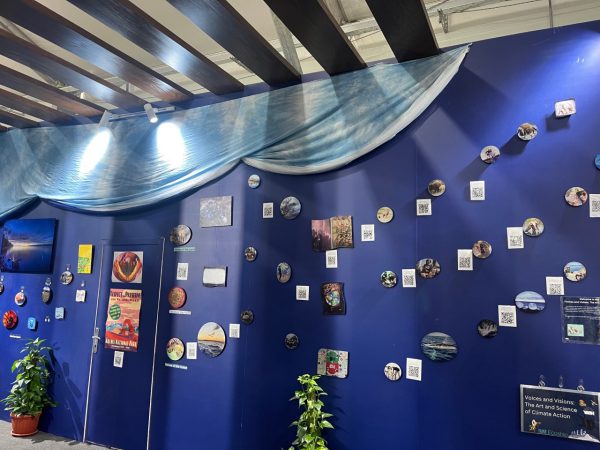
When the United Nations’ annual climate change conference convened in El Sheikh, Egypt, on November 6, it had a recent Kalamazoo College grad in attendance.
Since leaving K, Nicki Bailey ’21 has begun a master’s program in ecology at Colorado State University, where she has come under the tutelage of Gillian Bowser, who represents the institution’s Natural Resource Ecology Lab. Bowser’s expertise in climate change connects her with the U.S. State Department, and it was this connection that led Bailey to the opportunity to attend the climate conference.
The United Nations Framework Convention on Climate Change (UNFCCC) is the entity that addresses the world’s response to climate change, organizing the event more commonly called COP27, or the 27th United Nations Climate Change Conference.
“K was the birthplace of my passion for this subject because it’s where I found I could pursue climate action as a career, and it gave me the tools to pursue it,” Bailey said. “I worked in Dr. Ann Fraser’s lab from my sophomore year through my SIP (Senior Integrated Project). Between that and studying abroad my junior year, the experiences helped me jump into new and uncomfortable situations like going to a conference with 50,000 people in Egypt and feel comfortable with asking questions.”
The convention’s accomplishments in years past included the 2015 Paris Climate Agreement and the 1997 Kyoto Protocol. The ultimate objective of the agreements is to stabilize greenhouse gas concentrations in the atmosphere to prevent dangerous human interference with the climate system while allowing ecosystems to adapt naturally and enable sustainable development. This year’s goals included implementing plans to provide reparations for loss and damage associated with climate disasters.
Within the conference, Bailey collaborated with the Youth Environmental Alliance in Higher Education (YEAH) network to create an art exhibit for the U.S. Center at COP27. The exhibit connected student photos, artwork and scientific graphics to tell the story of youth engagement in climate action across the country.
Bailey’s opportunity with the project arose in September, and it involved sending several drafts of the project to the State Department before leaving for Egypt. The process was “super collaborative and really intensive for those two months,” Bailey said. “We were trying to achieve what the State Department wanted while keeping student voices at the center of the project.”
At Colorado State, Bailey studies pollinators and citizen science, enabling her to contribute photos and illustrations from her own work to the project alongside student contributions from other institutions.
“The essential message was combining scientific research and artwork to create action, specifically youth action, in the face of climate change,” Bailey said. “I’ve come from more of a scientific background, however, having this space with all this scientific knowledge being shared, we thought it was important to highlight how artwork can convey that message. We ended up making a collection that centered on topics of the land, the water and youth action in a thematic wave.”
After presenting the art project, she met people from backgrounds and careers from all around the world including Energy Department Secretary and former Michigan Governor Jennifer Granholm, all of whom were focused on reversing climate change.
“Every day there were hundreds of events that were going on simultaneously, so we had to be decisive about where we wanted to go,” Bailey said. “I would go to a talk and then several networking events in the U.S. Center that my advisor helped put together. I then would try to go to a negotiation in the afternoon. I got to go to one high-level ministerial conversation on carbon financing. That was super interesting because there were all these countries represented and all had a chance to argue for what they needed to prioritize.”
Bailey remembers one comment made during negotiations that was particularly striking to her.
“‘If we continue to emit greenhouse gases at our current rate, it is not the planet that will be lost, it is humanity,’” Bailey said. “As a scientist studying declining pollinators, I often hyper fixate on the loss of biodiversity as a detrimental effect of climate change. We need to remember that humanity is at the center of climate change’s widespread damage, and we are the only solution. We need to strengthen our infrastructure, focus on creative nature-based solutions, and mitigate climate change for our future generations.”
When she leaves Colorado State, Bailey could see herself involved in government work, but she would like her main focuses to be community engagement, citizen science and education.
“K provided me such a close-knit community in science and climate advocacy that I felt overwhelmed coming to a big research university,” Bailey said. “I want to emphasize for others that it’s OK to put yourself out there and try something outside your comfort zone. I feel like K helped me get those skills to keep pushing myself outside my comfort zone and attend conferences like COP27. I feel like I belong and have an important voice.”
